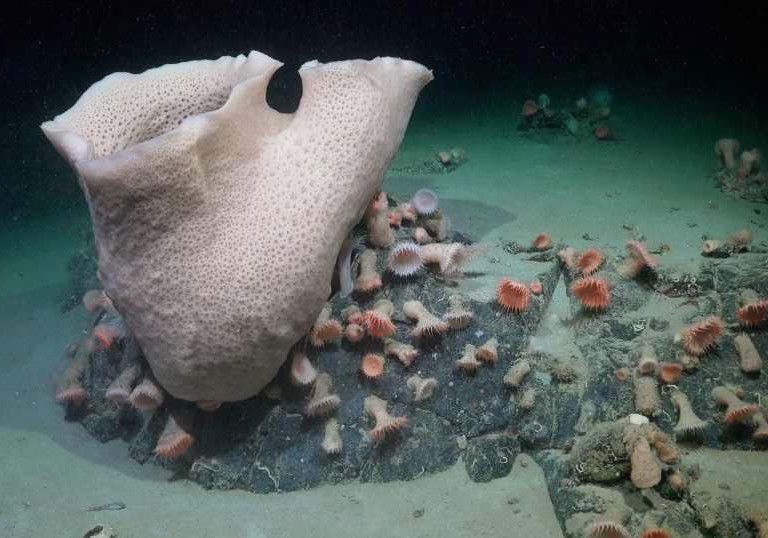In January, a massive iceberg the size of Chicago detached from Antarctica and drifted into the Bellinghausen Sea. Scientists aboard the Schmidt Ocean Institute’s R/V Falkor (too) were astonished to discover a vibrant community of diverse organisms thriving underneath it.
The researchers expressed that observing an iceberg of this magnitude break away in real-time was unexpected but offered them a rare chance to explore how certain resilient organisms, often referred to as extremophiles for their capability to survive in extreme conditions previously thought to be uninhabitable, can exist in such deep, dark environments.
Intriguing Discoveries Underneath the Iceberg
The research team surmised that their explorations with a Remote Operated Vehicle (ROV) beneath the newly calved iceberg might have uncovered several species that have not yet been identified. This discovery adds to the ongoing investigation into Antarctica’s many mysteries, including studies related to the continent’s sole native insect and other significant findings during recent studies, such as unusual giant formations beneath the Dotson Ice Shelf, and evidence suggesting Antarctica once had trees 90 million years ago.
In 2021, scientists made a notable discovery akin to the Bellinghausen Sea expedition when they found thriving marine life beneath an Antarctic Ice Shelf. A follow-up expedition in 2022 also revealed an unexpected community of crab-like organisms deep within the Antarctic region.
Uniqueness of the Research Opportunity
The team acknowledged that investigating the area beneath an iceberg is a rare chance, emphasizing their fortunate timing. Originally, they aimed to study the seafloor and the ecosystem at the boundary of ice and sea when the iceberg calved, which they described as a “rare scientific opportunity.”
Dr. Jyotika Virmani, Executive Director of the Schmidt Ocean Institute, stated, “We seized upon the moment, changed our expedition plan, and focused on the iceberg.” Expedition co-chief scientist Dr. Patricia Esquete noted, “We didn’t expect to find such a beautiful, thriving ecosystem. The size of the animals indicates these communities may have existed for decades or even centuries.”
Future Investigations and Environmental Impact
As the team started exploring the freshly exposed area, they discovered an iceberg approximately 510 square kilometers (about 209 square miles) in size, revealing a seabed that had been covered for millennia. Over eight days, they found thriving ecosystems at depths reaching 1300 meters, including large corals and a surprising diversity of animal life such as icefish, giant sea spiders, and octopuses.
This finding raises numerous questions for scientists as they work to uncover the precise mechanisms sustaining life in these remote ecosystems, which seem inhospitable. They hope their research will also contribute to efforts aimed at preserving the ice and mitigating climate change impacts.



